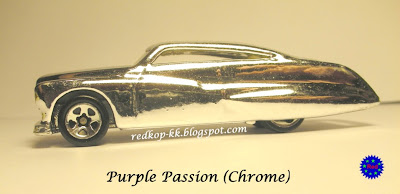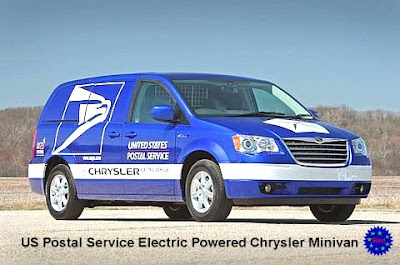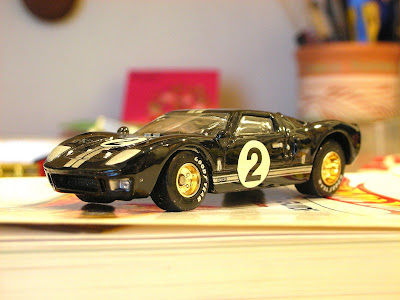
1. Introduction
For many car owners, it has always been a case of "speed" against "endurance". There is no clear indication as to which is the preferred option among car owners. However, "endurance" has always been my choice as many would agree that you would rather own a car that you can rely on to take you far away and back to exactly where you started from, without the car breaking down, instead of a car that is able to travel at breakneck speed but that you would eventually require to tow the car back to the starting point.
"Le Mans" - A SPORTS CAR RACE EVENT BASED ON ONE CLEAR AND SIMPLE PREMISE – ENDURANCE.
The 24 Hours of Le Mans (24 Heures du Mans) is the world's oldest sports car race in endurance racing, held annually since 1923 near the town of Le Mans, Sarthe, France. Commonly known as the Grand Prix of Endurance, it is organised by the Automobile Club de l'Ouest (ACO) and runs on a circuit containing closed public roads that are meant not only to test a car and driver's ability to be quick, but also to last over a 24 hour period.
Instead of focusing on the ability of a car company to build the fastest machines of the time, the 24 Hours of Le Mans would instead concentrate on the ability of manufacturers to build sporty yet reliable cars and yet fuel-efficient vehicles, since the nature of endurance racing requires as little time to be spent in the pits as possible. The "Le Mans start" takes its name from the way racers lined up across the street from their cars and ran across the street and jumped into their cars to begin.



2. Le Mans Circuit (Circuit de la Sarthe)
Total length per lap is 13.629 km. There are two separate racing tracks at Le Mans, though they share certain portions. The smaller is the Bugatti Circuit (named after Ettore Bugatti, founder of the car company bearing his name), a relatively short permanent circuit which is used for racing throughout the year. The longer and more famous “Circuit de la Sarthe” is composed partly of public roads, which are closed to the public when the track is in use for racing.
FIA (Fédération Internationale de l'Automobile) decreed that it would no longer sanction any circuit which had a straight longer than 2 km which led to the addition of two “chicanes” (A “chicane” is an artificial feature creating extra turns in a roadway, used in motor racing and on city streets after long straightaways, to slow cars, making them a prime location for overtaking) in 1990 along Mulsanne Straight (5km). The roads are closed only within a few hours of the practice sessions and the race, before being opened again almost as soon as the race is finished. Workers have to assemble and dismantle safety barriers every year for the public sections.

3. Notable Features of Le Mans
The circuit on which the 24 Hours of Le Mans is run is named the Circuit de la Sarthe (Circuit of the Sarthe), after the Sarthe department that Le Mans is within. The first race was held on 26 and 27 May 1923 and has since been run annually in June and usually 50 cars at the start of different “classes” of cars. No less than 2 seats and 2 doors are allowed for open top cars, doors are exempted. An overall winner is awarded at the end of the event, while class prizes are given as well. Minimum 3-drivers are required and no one single driver can drive more than 4-consecutive hours and a total of 14-hours for safety reasons. Competing cars are required to run at least for one hour before refilling of fluid such as cooling and lubricant is allowed except fuel. Cars which could not last the first hours without having to replace lost fluids are disqualified, a real test of a car’s reliability. Cars to be shut off while being refueled in the pits for safety reasons and also a test on the ability and reliability of the cars to restart many times under race condition. While car being re-fueled, mechanics are not allowed to work on the car and the tyres. Winner of the race is based on the number of laps covered within a period of 24 hours. To be classified in the race results, a car is required to cross the finishing line after 24 hours covering 70% of the distance covered by the winner. A car failing to complete this number of laps, even if it finished the race, was not deemed worthy of classification due to poor reliability or speed. Rolling start, sometimes known as an “Indianapolis start” was introduced, which has been used ever since. Race cars of the time were still mostly based on production road cars, but by the end of the 1960s, the Ford Motor Company would enter the picture with their GT40s, taking four straight wins before the era of production-based wins would come to a close.

4. Classes of Cars
Classes of Cars (4 types), divided by speed, weight and power output, namely :-
Custom-Built
- Le Mans Prototype 1 (LMP1)
- Le Mans Prototype 2 (LMP 2)
Production-Based
- Grand Tourer 1 (GT1)
- Grand Tourer 2 (GT2)
5. Past Winners
2009 Peugeot 908 HDi FAP (382 laps)(5,206.82 km)
2008 Audi R10 TDI (381 laps) (5,192.65 km)
2007 Audi R10 TDI (369 laps) (5,036.85 km)
2006 Audi R10 TDI (380 laps)(5,187.00 km)
2005 Audi R8 (370 laps) (5,050.50 km)
2004 Audi R8 (379 laps) (5,169.90 km)
2003 Bentley Speed 8 (377 laps) (5,146.05 km)
2002 Audi R8 (375 laps) (5,118.75 km)
2001 Audi R8 (321 laps) (4,381.65 km)
2000 Audi R8 (368 laps) (5,007.99 km)
1999 BMW V12LMR (365 laps) (4,968.00 km)
1998 Porsche 911 GT1 (351 laps) (4,773.18 km)
1997 TWR Porsche WSC-95 (361 laps) (4,909.60 km)
1996 TWR Porsche WSC-95 (354 laps) (4,814.40 km)
1995 McLaren F1 GTR (298 laps) (4.055.80 km)
1994 Dauer 962 Le Mans (344 laps) (4,678.40 km)
1993 Peugeot 905 Evo 1B (375 laps) (5,100.00 km)
1992 Peugeot 905 Evo 1B (352 laps) (4,787.20 km)
1991 Mazda 787B (362 laps) (4,922.81 km)
1990 Jaguar XJR-12 (359 laps) (4,882.40 km)
1989 Sauber C9-Mercedes-Benz (389 laps) (5,265.12 km)
1988 Jaguar XJR-9LM (394 laps) (5,332.97 km)
1987 Porsche 962C (354 laps) (4,791.90 km)
1986 Porsche 962C (367 laps) (4,792.73 km)
1985 Porsche 956 (373 laps) (5,088.51 km)
1984 Porsche 956 (359 laps) (4,900.28 km)
1983 Porsche 956 (370 laps) (5,047.93 km)
1982 Porsche 956 (359 laps) (4,899.09 km)
1981 Porsche 936 (354 laps) (4,825.35 km)
1980 Rondeau M379B (338 laps) (4,608.02 km)
1979 Porsche 935 K3 (307 laps) (4,173.93 km)
1978 Renault Alpine A442B (369 laps) (5,044.53 km)
1977 Porsche 936 (342 laps) (4,671.83 km)
1976 Porsche 936 (349 laps) (4,769.92 km)
1975 Mirage GR8-Ford Cosworth (336 laps) (4,594.58 km)
1974 Matra Simca MS670C (337 laps) (4,606.57 km)
1973 Matra Simca MS670B (355 laps) (4,853.95 km)
1972 Matra Simca MS670 (344 laps) (4,691.34 km)
1971 Porsche 917K (397 laps) (5,335.31 km)
1970 Porsche 917K (343 laps) (4,607.81 km)
1969 Ford GT40 Mk. I (372 laps) (4,997.88 km)
1968 Ford GT40 Mk. I (331 laps) (4,452.88 km)
1967 Ford GT40 Mk. IV (388 laps) (5,232.90 km)
1966 Ford GT40 Mk. II (360 laps) (4,843.09 km)
1965 Ferrari 250LM (348 laps) (4,677.11 km)
1964 Ferrari 275P (349 laps) (4,695.31 km)
1963 Ferrari 250P (339 laps) (4.561.71 km)
1962 Ferrari 330 TRI/LM Spyder (331 laps) (4,451.26 km)
1961 Ferrari 250 TRI/61 (333 laps) (4,476.58 km)
1960 Ferrari 250 TR59/60 (314 laps) (4,217.53 km)
1959 Aston Martin DBR1 (323 laps) (4,347.90 km)
1958 Ferrari 250 TR58 (305 laps) (4,101.93 km)
1957 Jaguar D-Type (327 laps) (4,397.11 km)
1956 Jaguar D-Type (300 laps) (4,034.94 km)
1955 Jaguar D-Type (307 laps) (4,135.38 km)
1954 Ferrari 375 Plus (302 laps) (4,061.15 km)
1953 Jaguar C-Type (304 laps) (4,088.06 km)
1952 Mercedes-Benz 300SL (277 laps) (3,733.84 km)
1951 Jaguar XK-120C (267 laps) (3,611.19 km)
1950 Talbot-Lago T26 Grand Sport (256 laps) (3,465.12 km)
1949 Ferrari 166MM (235 laps) (3,178.30 km)
1948 to 1940 - Races cancelled for World War II and
French reconstruction.
1939 Bugatti Type 57S Tank (248 laps) (3,354.76 km)
1938 Delahaye 135CS (235 laps) (3,180.94 km)
1937 Bugatti Type 57G Tank (243 laps) (3,287.94 km)
1936 Race cancelled due to workers strike
1935 Lagonda M45R Rapide (222 laps) (3,006.80 km)
1934 Alfa Romeo 8C 2300 (213 laps ( 2,886.94 km)
1933 Alfa Romeo 8C 2300 (233 laps) (3,144.04 km)
1932 Alfa Romeo 8C 2300 (218 laps) (2,954.04 km)
1931 Alfa Romeo 8C 2300 (184 laps) (3,017.65 km)
1930 Bentley Speed Six (179 laps) (2,930.66 km)
1929 Bentley Speed Six (174 laps) (2,843.83 km)
1928 Bentley 4½ Litre (154 laps) (2,669.27 km)
1927 Bentley 3 Litre Super Sport (137 laps) (2,369.81 km)
1926 Lorraine-Dietrich B3-6 (147 laps) (2,552.51 km)
1925 Lorraine-Dietrich B3-6 (129 laps) (2,233.98 km)
1924 Bentley 3 Litre Sport (120 laps) (2,077.34 km)
1923 Chenard et Walcker Sport (128 laps) (2,209.54 km)









.jpg)





6. CONSTRUCTOR WINS
Rank Constructor Wins :-
1 Porsche (16)
2 Ferrari (9)
3 Audi (8)
4 Jaguar (7)
5 Bentley (6)
6 Alfa Romeo (4)
Ford (4)
8 Matra-Simca (3)
Peugeot (3)
Lorraine Dietrich (3)
11 Bugatti (2)
Mercedes Benz (2)
13 Aston Martin (1)
BMW (1)
Chenard & Walcker (1)
Delahaye (1)
Lagonda (1)
Mazda (1)
McLaren (1)
Mirage (1)
Renault-Alpine (1)
Rondeau (1)
Talbot Lago (1)
7. CONSTRUCTOR DOMINATIONS
1927-30 Bentley domination
1951-53 Jaguar C-Type domination
1955-57 Jaguar D-Type domination
1960-65 Ferrari domination for 5-years
1966-69 Ford GT40
2000-05 Audi domination for 5-years
8. Le Mans 2009 Race Results – After 24 Hours
1. Peugeot Hdi-FAP (Class LMP1) (382 laps) (Av. 216.664 km/hr) (0-track gap)
2. Peugeot Hdi-FAP (Class LMP1) (381 laps) (Av. 216.095 km/hr) (1-track gap)
3. Audi R15 TDI (Class LMP1) (376 laps) (Av. 212.734 km/hr) (6-tracks gap)
4. Lola Aston Martin (Class LMP1) (373 laps) (Av. 211.435 km/hr) (9-tracks gap)
5. Oreca AIM (Class LMP1) (370 laps) (Av. 209.800 km/hr) (12-tracks gap)
6. Peugeot Hdi-FAP (Class LMP1) (369 laps) (Av. 209.286 km/hr) (13-tracks gap)
7. Audi R10TDI (Class LMP1) (369 laps) (Av. 209.125 km/hr) (1:06)
8. Pescarolo Judd (Class LMP1) (368 laps) (Av. 208.595 km/hr) (14-tracks gap)
9. Audi R10 TDI (Class LMP1) (360 laps) (Av. 204.024 km/hr) (22-tracks gap)
10. Oreca Judd (Class LMP1) (344 laps) (Av. 194.929 km/hr) (38-tracks gap)
11. Lola Aston Martin (Class LMP1) (342 laps) (Av. 193.860 km/hr) (40-tracks gap)
12. Lola Aston Martin (Class LMP1) (342 laps) Av. 193.794 km/hr) (0:29)
13. Audi R15 TDI (Class LMP1) (333 laps) (Av. 188.405 km/hr) (49-tracks gap)
14. Gynetta Zytek (Class LMP1) (325 laps) (Av. 183.873 km/hr) (57-tracks gap)
15. Creation Judd (Class LMP1) (319 km/hr) (Av. 180.806 km/hr) (319-tracks gap)
































































.jpg)






